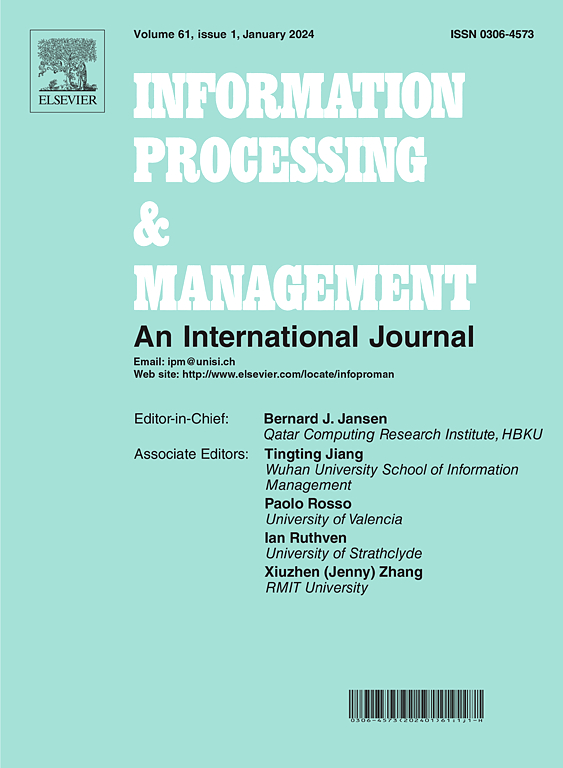Improving multimodal fake news detection by leveraging cross-modal content correlation
IF 7.4
1区 管理学
Q1 COMPUTER SCIENCE, INFORMATION SYSTEMS
引用次数: 0
Abstract
The widespread presence of multimodal fake news on social media platforms has severely impacted public order, making the automatic detection and filtering of such content a pressing issue. Although existing studies have attempted to integrate multimodal data for this task, they often struggle to effectively model cross-modal correlations. Most approaches focus on the global features of each modality and compute scalar similarities, which limits their capacity to learn and process comprehensive samples. To address this challenge, this paper introduces a novel cross-modal content correlation network. This method leverages salient objects from images and nouns from the text as the multimodal content, utilizing CLIP to extract generalizable features for similarity measurement, thereby enhancing cross-modal interaction. By applying convolution to the similarity matrix between nouns and image crops, the model captures learnable patterns of cross-modal content correlations that facilitate news classification, without relying on predefined scalar similarities or requiring supplementary information or auxiliary tasks. Experiments on two real-world datasets reveal that our method outperforms previous methods, achieving 3.1% and 1.9% gains in overall accuracy on Weibo and Twitter, respectively. The source code is available at https://github.com/cgao-comp/C3N.
求助全文
约1分钟内获得全文
求助全文
来源期刊

Information Processing & Management
工程技术-计算机:信息系统
CiteScore
17.00
自引率
11.60%
发文量
276
审稿时长
39 days
期刊介绍:
Information Processing and Management is dedicated to publishing cutting-edge original research at the convergence of computing and information science. Our scope encompasses theory, methods, and applications across various domains, including advertising, business, health, information science, information technology marketing, and social computing.
We aim to cater to the interests of both primary researchers and practitioners by offering an effective platform for the timely dissemination of advanced and topical issues in this interdisciplinary field. The journal places particular emphasis on original research articles, research survey articles, research method articles, and articles addressing critical applications of research. Join us in advancing knowledge and innovation at the intersection of computing and information science.
 求助内容:
求助内容: 应助结果提醒方式:
应助结果提醒方式:


